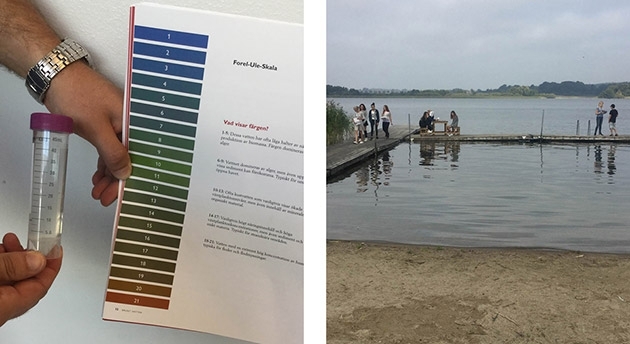Measurements by school pupils paved way for key research findings
With their measurements and samples, nearly 3,500 schoolchildren have assisted a research study on lakes and global warming, now published in an academic journal. The results show that water temperatures generally remain low despite the air becoming warmer. This helps to curb the outflow of greenhouse gases.
How often is water warmer than air? Gesa Weyhenmeyer, Professor of Aquatic Biogeochemistry at Uppsala University, asked herself this question when she analysed thousands of measurements. They were taken in late summer and autumn 2016 by compulsory school pupils at senior level (years 7–9) from 66 schools in Sweden.
“The study is an excellent example of how citizen science, or crowd-sourced research, can truly be a win-win situation. The pupils learnt a lot about various scientific subjects, while scientists obtained unique and highly valuable data,” Weyhenmeyer says.
The temperature difference between air and water is an important issue, since it has a major bearing on gas exchange between inland waters (lakes and watercourses) and the atmosphere. Inland waters contain greenhouse gases in abundance and, in one year, release almost as much carbon dioxide as the world’s oceans can absorb. If the water is warmer than the air, emissions of greenhouse gases from inland waters into the atmosphere are boosted; if the water remains cooler than the air, the emission is reduced.
The pupils’ measurements show that the water often stays considerably cooler than the air, which is being heated by ongoing global warming. Finding an ever greater difference in temperature between air and water and that this difference is linearly related to the rise in air temperature was unexpected for the researchers. A comparison with automated air and water temperature measurements in 14 lakes worldwide confirmed the pupils’ results.
“These findings are highly relevant to the UN’s Intergovernmental Panel on Climate Change (IPCC). They point to a potential mitigation of climate change, in which the outflow of greenhouse gases from natural waters may decrease, as long as the gas concentrations in the water don’t rise and factors like wind speed don’t change,” Weyhenmeyer says.
The measurements were taken as part of the ‘Brown Water’ project, conducted with the help of the Disciplinary Domain of Science and Technology at Uppsala University in 2016. Almost 3,500 pupils at senior level in compulsory schools all over Sweden set off into the countryside to take water samples and measure air and water temperatures.
Weyhenmeyer et al. (2017) Citizen science shows systematic changes in the temperature difference between air and inland waters with global warming, Scientific Reports.
Linda Koffmar

